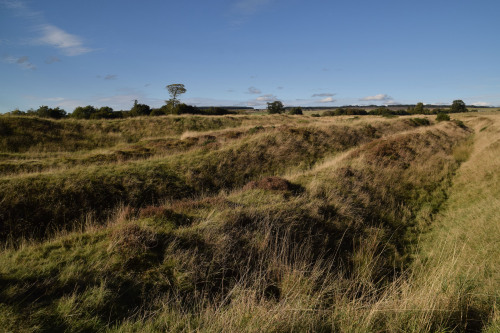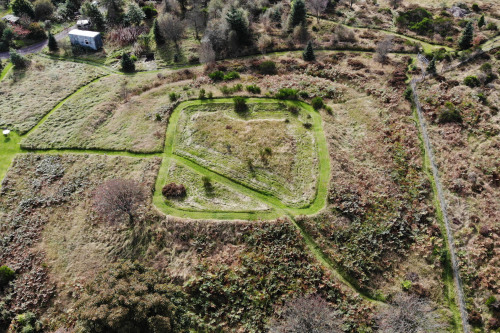#muir o fauld
Ardoch Roman Fort, Kaims Castle Roman Fortlet and Muir O’ Fauld Watchtower | Gask Ridge, Perthshire
We visited a few places along the Gask Ridge, the Roman frontier that was established during their first campaign in Scotland in the 1st Century AD, led by Agricola. He established temporary marching camps all the way up to Inverness, but the forts on the Gask Ridge were built to last (as you can see Ardoch has lasted until now). They form a line running along the Highlands in safe distance, with some ‘Glenblocker’ forts sitting on the entrance of the glens to give warnings of raids. After the Battle of Mons Grapius in 83 AD, where the Scottish tribes faced the Romans head-on and lost badly, the tribes would pretty much only use guerrilla tactics, hiding in the mountains and forest and raiding Roman camps when they least expected it. The occupation of the Gask Ridge lasted hardly a decade before the Romans abandoned this frontier. Though two more attempts were made in the centuries to come (the Antonine Wall was built during the 2nd attempt) and Ardoch was re-used and re-built both times. That is perhaps why it is so well-preserved and from up in the air you can still see the older, oblong fort underneath the second square-shaped they built on top (1st picture). Fortlets were slightly smaller forts to bridge the distance between the large Forts and Watchtowers filled in the rest of the line, so that there was something every 1-1.5 km and a signal (for example beacons of smoke) could be relayed swiftly between the main camps. In addition, the large forts were always situated near a river. You can tell that the Romans had their strategy down. And yet, they never gained a foothold in Scotland. Head over to Youtube for our visit of the Gask Ridge, which ended up being a mini-documentary, if you want to dive deeper into the history of the Romans in Scotland.
Post link








